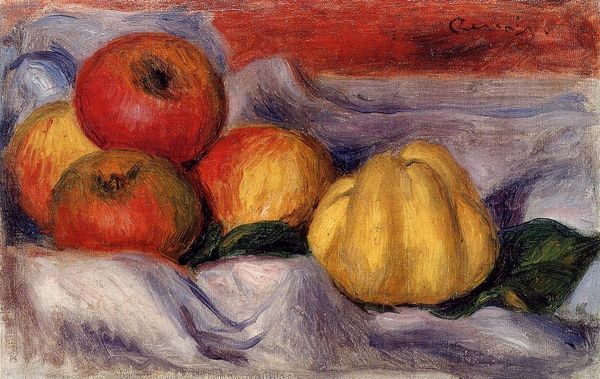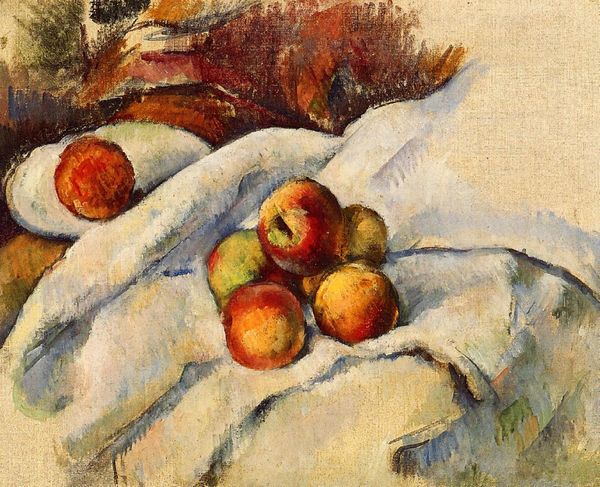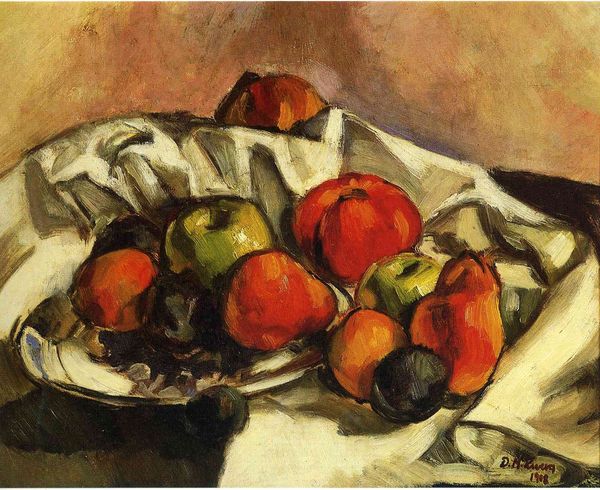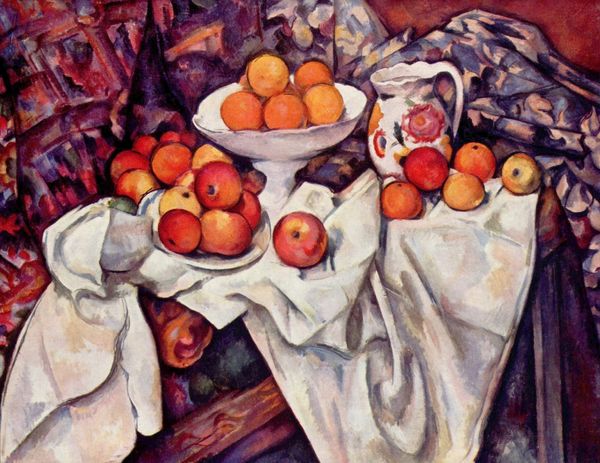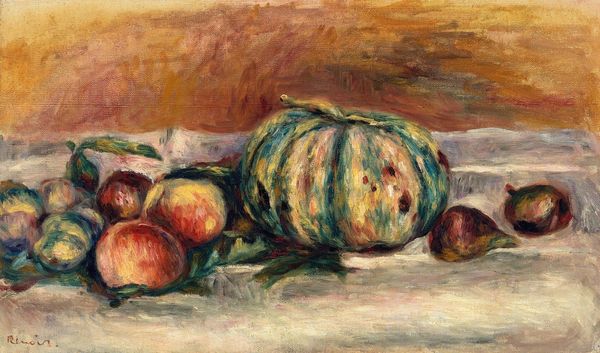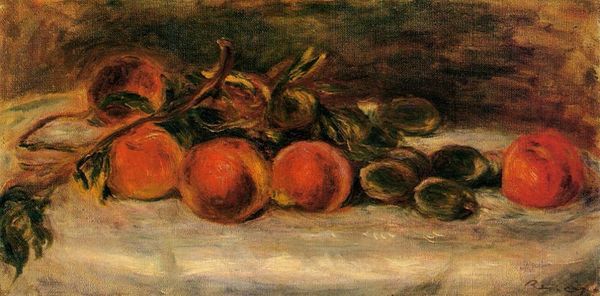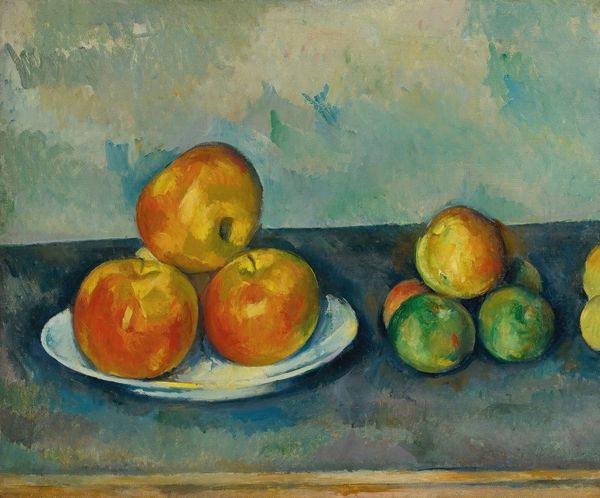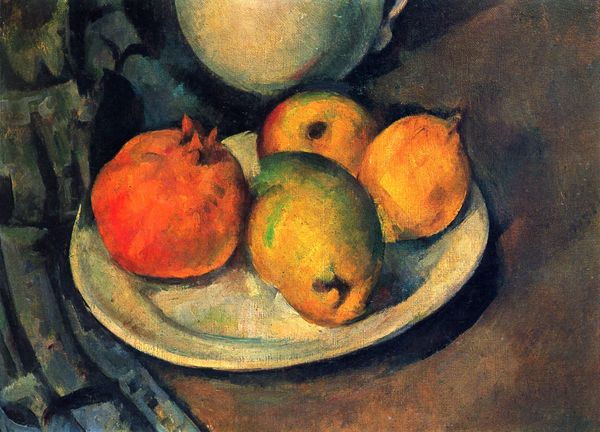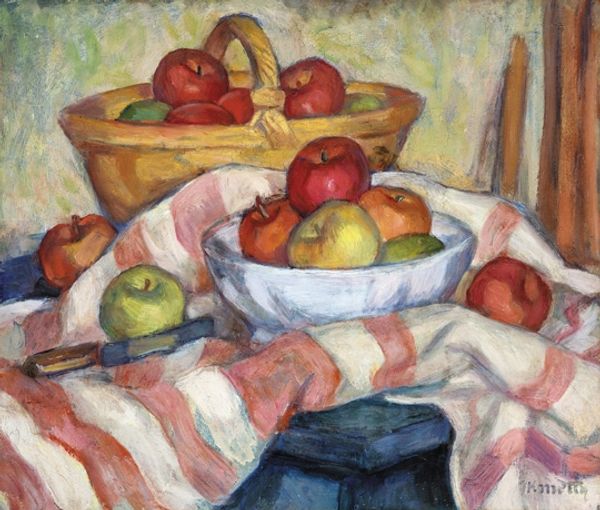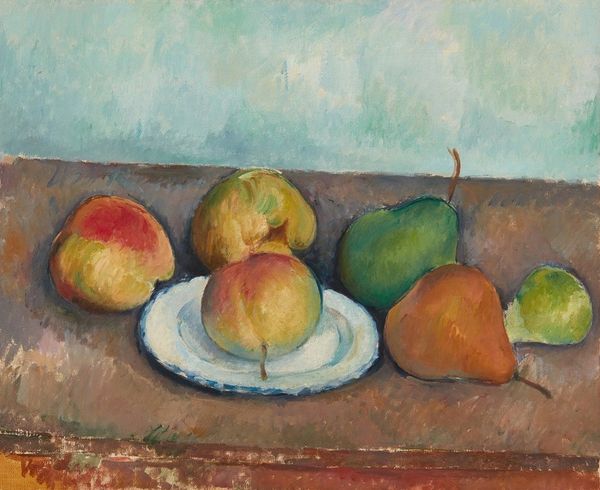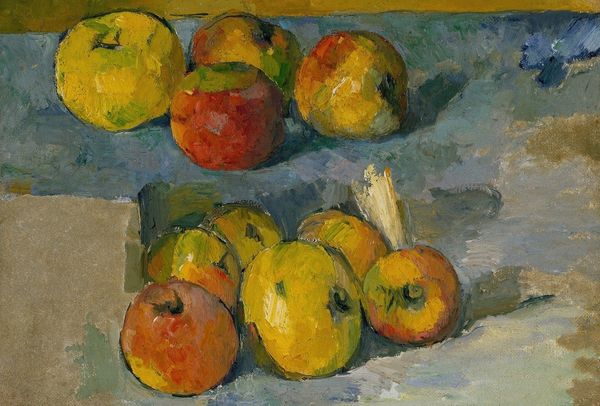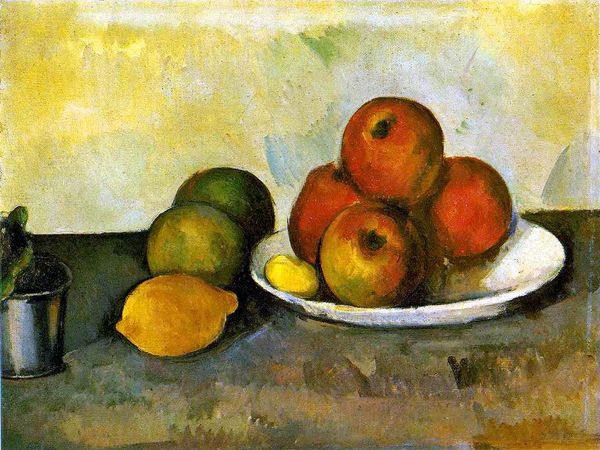
painting, oil-paint
#
painting
#
impressionism
#
oil-paint
#
figuration
#
oil painting
#
post-impressionism
#
academic-art
Copyright: Public domain
Editor: So here we have Renoir's "Pears and Apples," created around 1890 with oil paints. What strikes me most is the thick, almost tactile quality of the paint itself. What do you see when you look at this piece? Curator: Immediately, I consider the accessibility of the subject. Fruit – available to many, unlike grand historical narratives. It's not just *what* is depicted but *how*. Think about the pigment Renoir employed: how were they sourced, what was the socio-economic context surrounding their production and trade? Was this readily available to all artists? Editor: That’s fascinating. I hadn't considered the pigments themselves. So the accessibility of materials becomes a question. Curator: Exactly! The canvas, too – what was its source, its cost? And how does Renoir’s painterly technique, this visible brushwork, relate to the labor involved, both his and the laborers further down the chain? Is it about highlighting artistry, or something else? Editor: I guess that makes me rethink the seemingly simple nature of the painting. It appears he wants us to think about more than what's at surface level. Curator: Precisely. Even the simple white cloth draped beneath the fruit – consider its materiality, its origins. Is it a mass-produced textile, or hand-woven? Everything in the painting has a story related to production, consumption, and value. How does Renoir acknowledge that within this art object? Editor: I now see this isn't just a pleasant still life, but an interrogation of value and production within its own historical context. Curator: Indeed, questioning how such seemingly 'simple' subjects were actually part of a broader, more complex reality helps reveal deeper levels of interpretation and critical analysis.
Comments
No comments
Be the first to comment and join the conversation on the ultimate creative platform.
